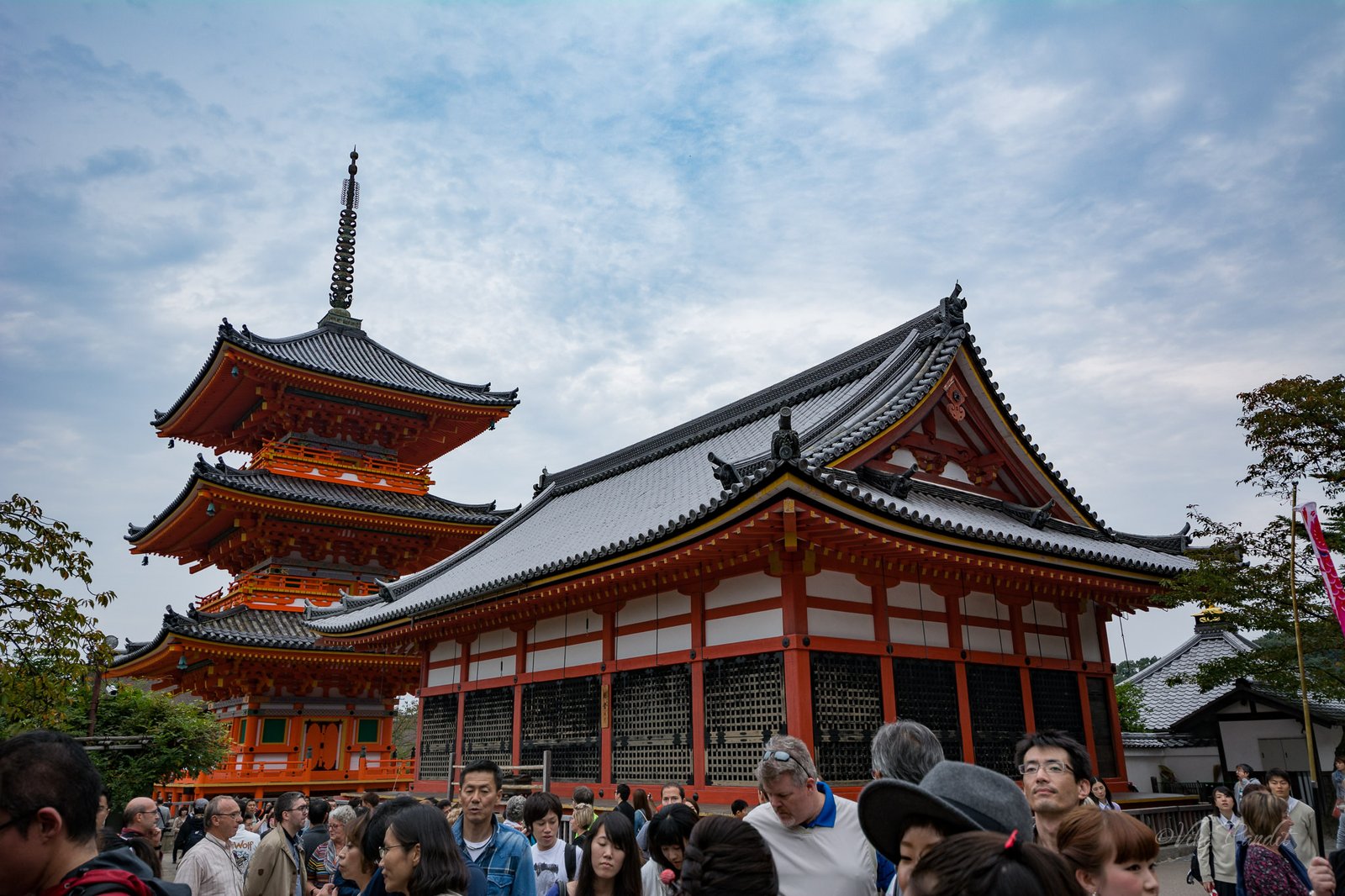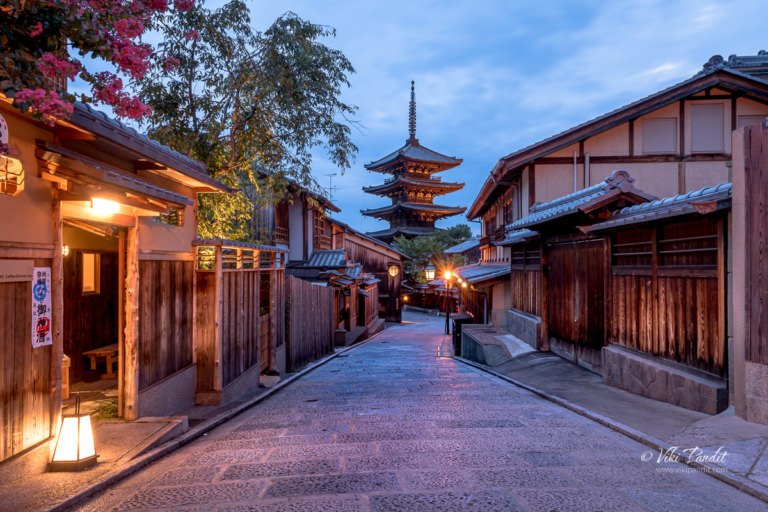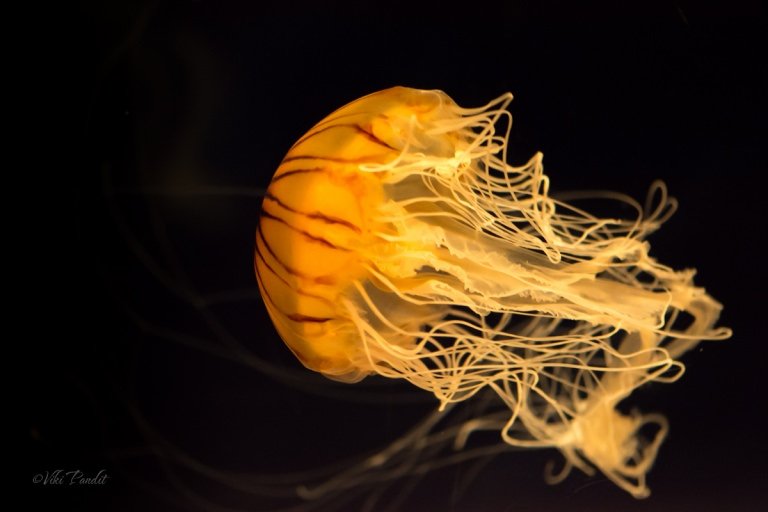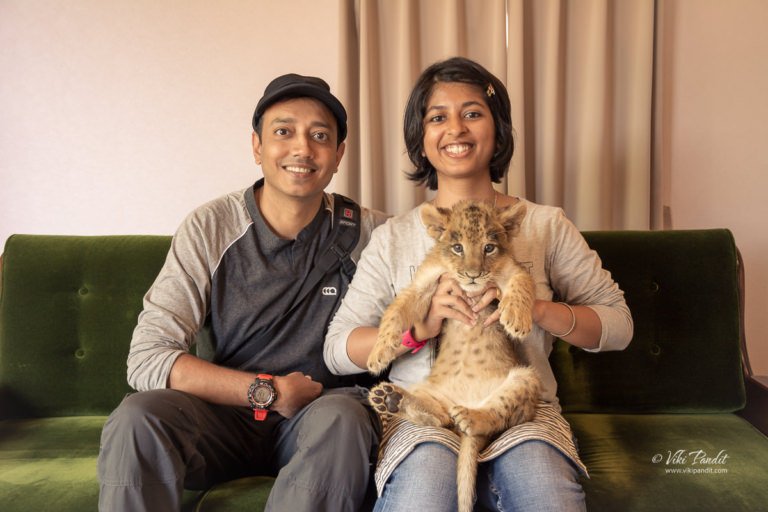Weekend was finally here. I had been slugging long nights working during US business hours and needed a break badly. We had been planning to visit Kyoto during one of the extended weekends but it was impossible to get a hotel booking. Eventually we decided to just go, roam around and come back the same day. Its hardly an hour away anyways, less if one uses the Limited Express trains.
We got up early, had a light breakfast and walked down to Kintetsu Nara Station. We caught the Limited Express to Kyoto, it cost us ¥ 1300 each. You can also catch a train from JR Nara Statation, whichever is closest to you. Its almost double of the local train, but being an express train, its about 20 minutes faster.
The train arrived in a few minutes. The seat numbers and the platform were printed on the ticket, so we didn’t face any difficulty boarding the train. The Kintetsu Nara Station is underground. The train rose above the ground a few minutes into the journey. It cruised past most stations only stopping at a handful and were in Kyoto in 35 minutes.
Day tour of Kyoto
Nara is a quiet city. Coming from there, I was taken aback by the bustling crowd at Kyoto Station. We walked down to the Information Center. A guy at the counter gave us a map and a bus information sheet. The sheet contained various permutations for sightseeing the interesting places in Kyoto along with respective Bus numbers. He also provided us with an all day bus pass for ¥ 500 each.
Nijo Castle
The first stop on our route was Nijo Castle. It takes around 20 minutes to reach the castle from Kyoto Station. As we got down, I was a bit disappointed seeing the entrance gate covered up for repairs. Thankfully it was only the front gate that was being repaired. The admission tickets cost ¥ 600 per person. A wide gravel path took us towards the main gate of Ninomaru Palace inside the castle.
Nijo-jo is a flat land castle. It was constructed in 1603 CE as the residence of Tokugawa Ieyasu. Tokugawa Ieyasu(1542-1616) was the founder and first shogun of the Tokugawa shogunate of Japan. The castle consists of two concentric rings of fortifications, the Ninomaru Palace and the ruins of the Honmaru Palace.
The sun was playing hide & seek. We stood near the beautifully crafted gate decorated with lavish quantities of gold leaf and elaborate wood carvings trying to get a clear shot of the gate. Eventually we surrendered to the steady flow of people and went inside the Ninomaru Palace. One has to take off their shoes to go inside the palace. Photography is not allowed inside.
The Ninomaru Palace is famous for its “nightingale floors” which were designed to squeak when stepped on and thus alert guards to any intruders. Inside, we came across a huge room with life-size sculptures depicting the shogun meeting the warlords (Daimyo). The Ninomaru Palace contains gorgeous paintings on the walls. They are painted in rich colors depicting flowers, trees, birds and tigers. I was surprised not to see a single furniture in any of the chambers. Mani reminded me, the Japanese didn’t use any, in ancient times.
As we went deeper inside the castle, I observed some of smaller chambers were painted differently. A plaque before us told us that the shogun used to have different guest chambers for each season. Each of these chambers were painted differently, to give a feel of that particular season. These paintings are said to be created by the revered artist Kano and his sons.
After touring the Ninomaru Palace, we took a leisurely stroll through the wonderful Seiryu-en Garden, which surrounds the castle. The castle grounds houses a beautiful rock pond with a tiny waterfall.
A narrow path led us to a bigger garden with groves of plum and cherry trees. Another deep moat surrounds the remains of the Honmaru Palace. A stone bridge over the moat went inside the castle.
I wanted to roam around a bit more on the grounds, so we didn’t go inside. We circled around the castle and reached the rear gate. The rear gate was huge, with thick wooden doors.
Past the stone walls, a staircase leads to a high lookout point. From here one can keep a good watch over the inside moat and the gardens.
We roamed around in the garden for some time and then headed back to the bus stop for Kinkaku-ji.
Opening hours:
8.45am-5pm, last entry 4pm
Closed:
Tuesdays in December, January, July, August, and December 26 – January 4
Admission:
Adults: 600 Yen
Kinkaku-ji
The bus dropped us off in front of the temple. We were hungry from all the walking so we sauntered down the road looking for an eatery. There are rows of restaurants. Mani wanted to have Soba Udon so we hunted around a bit for one that served. After a warm light lunch, we walked back towards Kinkaku-ji.
Kinkaku-ji was built in 1393 CE as a retirement villa for Shogun Yoshimitsu Ashikaga (1358-1409). He intended to cover the exterior with gold, but only managed to coat the ceiling of the third floor with gold leaf before his death. The shogun lived here in luxury as Kyoto’s people suffered from severe famine, earthquakes and plague. After Yoshimitsu’s death, as indicated in his will, the building, officially named Rokuon-ji was converted into a temple of the Zen sect of Buddhism.
Kinkaku-ji burned down several times during the Onin War. In 1950, the Golden Pavilion got burned again, this time by a fanatical monk. The present temple structure dates from 1955, which was rebuilt true to the original except for a significant enhancement: both upper stories are covered in gold leaf, in accordance with Ashikaga’s original intentions. In 1987, the temple was re-covered in gold leaf five times thicker than the original coating. Recognized by UNESCO as a World Cultural Heritage, Kinkaku-ji is one of the historical buildings most representative of Japan.
As we neared the temple the crowd also grew. Kinkaku-ji must be on everyone’s “must-see” list. This was the only place where we had to get in a queue for admission tickets. The entrance was packed with hoards of tourists. As we went inside I was finding it difficult to even move freely, such was the crowd. A few meters inside I understood why!
My eyes transfixed on the Golden Pavilion (kinka-ku), sitting picturesquely in its garden at the edge of a lake. The pavilion extends partially over the pond and is beautifully reflected in the calm waters from here. I slowly pushed and shoved till I was able to reach the railing overseeing the lake. We stood there admiring one of the most beautiful sights in Kyoto. No wonder there is so much crowd!
We walked up the path getting closer to the temple. The wooden pavilion has three stories surrounded by balconies, the upper two of which are completely covered in gleaming gold leaf. The shogun only managed to gild the interior ceiling, but he always intended to cover the outside as well. In addition to its worldly treasure, Kinkaku-ji is highly valuable because it is a shariden, housing relics of the Buddha. The first floor of the pavilion, known as the Hôsuiin (“Temple of Dharma Water”), is built in the shinden style associated with 11th-century Heian nobility. The walls separating it from the balcony only rise half-way, allowing plenty of light and fresh air into the room.
The second story, called the Chôondô (“Tower of Sound Waves”), is built in the buke style of samurai houses. It houses a statue of Kannon. The third floor of Kinkaku-ji is built in the style of a Buddha Hall in a Zen temple and is known as the Kukkyocho. It has round-headed windows and is more richly ornamented than the other floors. Inside, it shelters an Amida triad and 25 Bodhisattvas. The roof is topped with a golden Chinese phoenix.
As we walked towards the back, I saw a rock garden called Kyoko-chi, surrounded by the pond with Koi fishes swimming in abundance. We walked around the temple grounds. At the back there are few souvenir stalls. Some locals were selling crackers and wasabi nuts. I just love Wasabi Nuts! It was a wonderful experience at Kinkaku-ji, but I would have preferred less crowds. It was early evening and we hurried towards our next stop.
Opening hours:
9.00am-5pm, last entry 4pm
Closed:
Open all days
Admission:
Adults: 400 Yen
Kiyomizu-dera
We were a bit out of time, so we skipped Ginkakuji and headed straight to Kiyomizu-dera. On the way we passed Gion. Mani wanted to go there, we plan to go there next time we are in Kyoto. It was almost 4 by the time we reached Kiyomizu-dera bus stop. It’s a long walk to the temple. The narrow alley is lined with sweet & souvenir shops. Hundreds of girls in kimono going up the path. It was like a festival.
Kiyomizu-dera, officially Otowa-san Kiyomizu-dera is an independent Buddhist temple in eastern Kyoto. The platform of the main hall, which is supported by 139 giant pillars.
Located halfway up Otowa Mountain in the eastern part of Kyoto City, Kiyomizu-dera is a historic temple that was established in 778 AD. Since its inception, the temple has burned down many times. Most of the current buildings were rebuilt by the third Shogun Tokugawa Iemitsu in the early Edo period.
The Main Hall (Hondo) of the temple is designated as a national treasure. The temple has many other important cultural properties including the Deva gate, west gate, three-storied pagoda and bell tower. In 1994, it was registered on the UNESCO World Cultural Heritage List as one of the Historic Monuments of Ancient Kyoto.
The two most famous places of the temple are the Main Hall, where the Eleven Headed and Thousand Armed Kannon Bodhisattva – which is famous for the power of answering prayers – is enshrined and Kiyomizu Stage, which is the veranda of the Main Hall extended over a precipice which affords a spectacular view of the town of Kyoto. Along the ravine to the south of the main hall grow cherry and maple trees. This temple is known for its cherry blossoms in the spring, and its red leaves during the fall.
Kiyomizu-dera (the temple of clear water) was named after Otowa Waterfall. Water from a spring in the mountain has been falling there since its foundation. We went down to the Otowa-no-taki, the waterfall where visitors drink for health, longevity, and success in studies. Many visitors had lined up for same and a small queue had built up. After taking a sip of the cold Otowa water we headed towards the three-storied pagoda. In the failing light, the crowd had petered down and we were able to get some good pictures of the pagoda.
It gets dark very early in Japan. By 5 p.m. it was already very dark. We head back to the bus stop. One the way we stopped for some shopping. The shops were closing down fast. In the little time we got, Mani bought me a Yukata. We also bought a pack of local sweets. While walking back, a guy was selling cuttlefish tempura. It was a bit cold and I totally enjoyed the warm fish.
The bus back to Kyoto Station was extremely crowded. I haven’t been on such a crowded bus since my younger days when I used to go to office in Kolkata.
We took the regular train to Nara. Its cheaper by half (670 Yen), though it took us around an hour to reach Nara. There are days and this was one of “those” days. It was memorable to visit Kinkaku-ji, watching the girls in Kimono on the streets leading to Kiyomizu-dera, and lovely Japanese food.. I sure am having the time of my life 🙂
Opening hours:
6.00am-6pm, last entry 4pm (closing time differs according to the season: http://www.kiyomizudera.or.jp/lang/01.html#menu02)
Closed:
Open all days
Admission:
Adults: 300 Yen
Disclaimer: The information presented in this article is based on the time I visited the premises. Note that there might be changes in the prices of merchandise and admission fees that might have occurred after this article was published. At times the facility might also be closed for repairs or for variety of other reasons. Kindly contact the facility or facilities mentioned in this article directly before visiting.
Usage of this site indicates acceptance of my Terms and Conditions.
Credits: The historical information presented herein is gathered mostly from local guides that were re-inforced via historical writings.
















